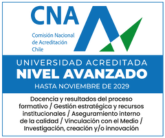Erico Carmona(a), Noelia Benito(b), Tania Plaza(a), Gonzalo Recio-Sánchez(a)(c).
(a) Núcleo de Investigación en Bioproductos y Materiales Avanzados (BioMA), Facultad de Ingeniería, Universidad Católica de Temuco, Temuco, Chile.
(b)Departamento de Física, Facultad de Ciencias Físicas y Matemáticas, Universidad de Chile, Santiago, Chile.
(c)Departamento de Ciencias Matemáticas y Físicas, Facultad de Ingeniería, Universidad Católica de Temuco, Temuco, Chile.
GREEN CHEMINISTRY LETTERS AND REVIEWS
Volumen: 10(4) Páginas: 250-256.
DOI: https://doi.org/10.1080/17518253.2017.1360400
Fecha de publicación: 10 de Agosto de 2017
Abstract
Over the last few years, the green synthesis of nanoparticles (NPs) using plant extracts has emerged as a promising methodology for the fabrication of metallic NPs (especially silver, copper, and gold NPs), as it involves an easy, fast, low-cost, and environmentally friendly bioprocess. However, many factors affect the sizes and morphologies of NPs biosynthesized by this method, including the nature of the plant extract, among others. Therefore, the green synthesis of metal NPs with defined stability, size, and morphology distribution remains under evaluation. In the present study, we propose aqueous extracts from the endemic-medicinal plant Budleja globosa (“Matico”) as an efficient bioproduct for the green synthesis of silver NPs (AgNPs). Experimental results indicate that room temperature, low concentrations of leaf extracts of B. globosa, and silver nitrate salt were sufficient to biosynthesize AgNPs with uniform size (16 nm) and shape distribution (spherical).



